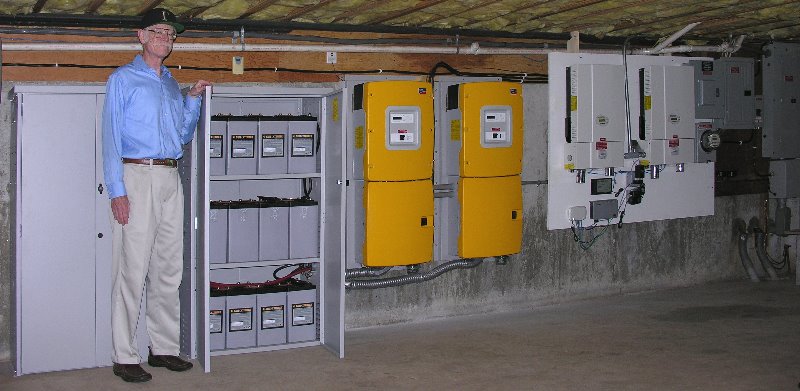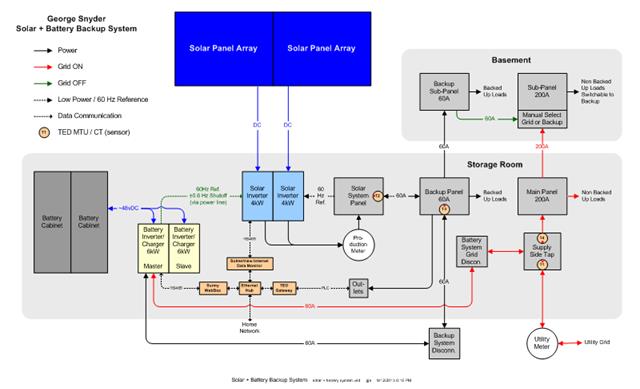Guest Post by New England Clean Energy Customer George Snyder
Installing a solar photovoltaic system to generate clean, cost-effective electricity fulfilled a long-standing desire for me and my wife. On many days it provides more energy than we use. However, it could not reduce the frustration of power failures. Grid-tied solar electric systems are required to shut down during outages, to protect utility repair crews. That left our new power generation system useless when we needed it most.
Short outages were a nuisance, interrupting everything from my PC operations and my wife’s knitting machine work, to DVR recordings. Much worse were major storms in October 2011 and 2012, which left us with no lights, heat, cooking equipment, or well water for days. We resorted to candles, LED lanterns, wood stove, jugs of drinking water, and even melted snow.
Everyone said we should get a generator, but we didn’t want to deal with the fuel, oil, maintenance, noise, exhaust fumes, and carbon emissions. What we really wanted was a battery backup system that would power our home and recharge from our solar array during an outage. We wanted to back up most of the house circuits, not just a few “critical systems” such as the refrigerator, well pump, heating, and selected lights.
Viewing a neighbor’s backup system proved our vision was practical. We asked New England Clean Energy to build our battery backup system, because we are happy with the solar array they installed.
Designing a system to work with our existing solar inverters, provide the power we wanted, and recharge quickly enough, proved difficult. I had many conversations with Mark Durrenberger, working out requirements, specifications, and choice of equipment. Mark and his staff were patient and creative in finding ways to achieve what we wanted.
After careful and thorough planning, our system was installed. It has a nominal backup capacity of 20 kilowatt-hours. Available power is just under 12 kilowatts, far more than our normal load. It can even run our central A/C for short periods on sunny days.
During an outage, the solar inverters do not drive loads directly. The house runs on batteries, and the solar inverters turn on and off as needed to keep the batteries charged.
Monitoring backup system status is especially important during an extended outage. That is also the time our Internet connection is most likely to fail, so we cannot depend on manufacturer-provided web portals. Our original solar inverter monitor, a new battery inverter monitor, and a new TED gateway (to report loads on selected circuits) enable us to monitor the entire system through a web browser connecting directly over our local home network.
We tested the system by disconnecting from the grid and running on backup for a day and a half. It worked perfectly. Since then we’ve only had one outage, for about two hours. We didn’t even notice the power go out, but I saw the change in system monitor graphs before power came back on. I’m actually looking forward to the next serious outage as a full test.
If you’re interested in battery backup that can be recharged by solar, be aware that the expense requires a strong commitment to clean energy. Our cost was about three times that of an equivalent generator system. Also, adding backup to an existing solar electric system can require complex analysis and design. If you can, have your solar electric and battery backup systems designed together from the start.
If you liked this article, you might also enjoy:




 Download our 7 FAQs
Download our 7 FAQs

